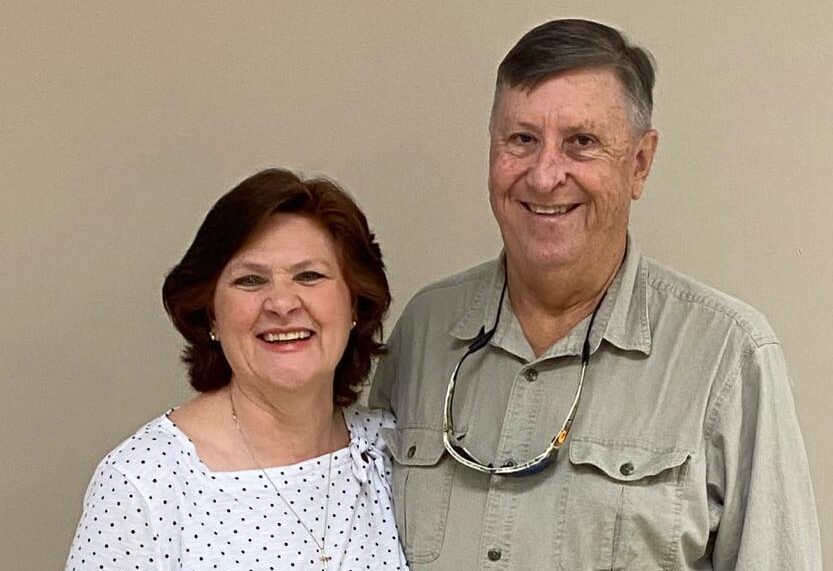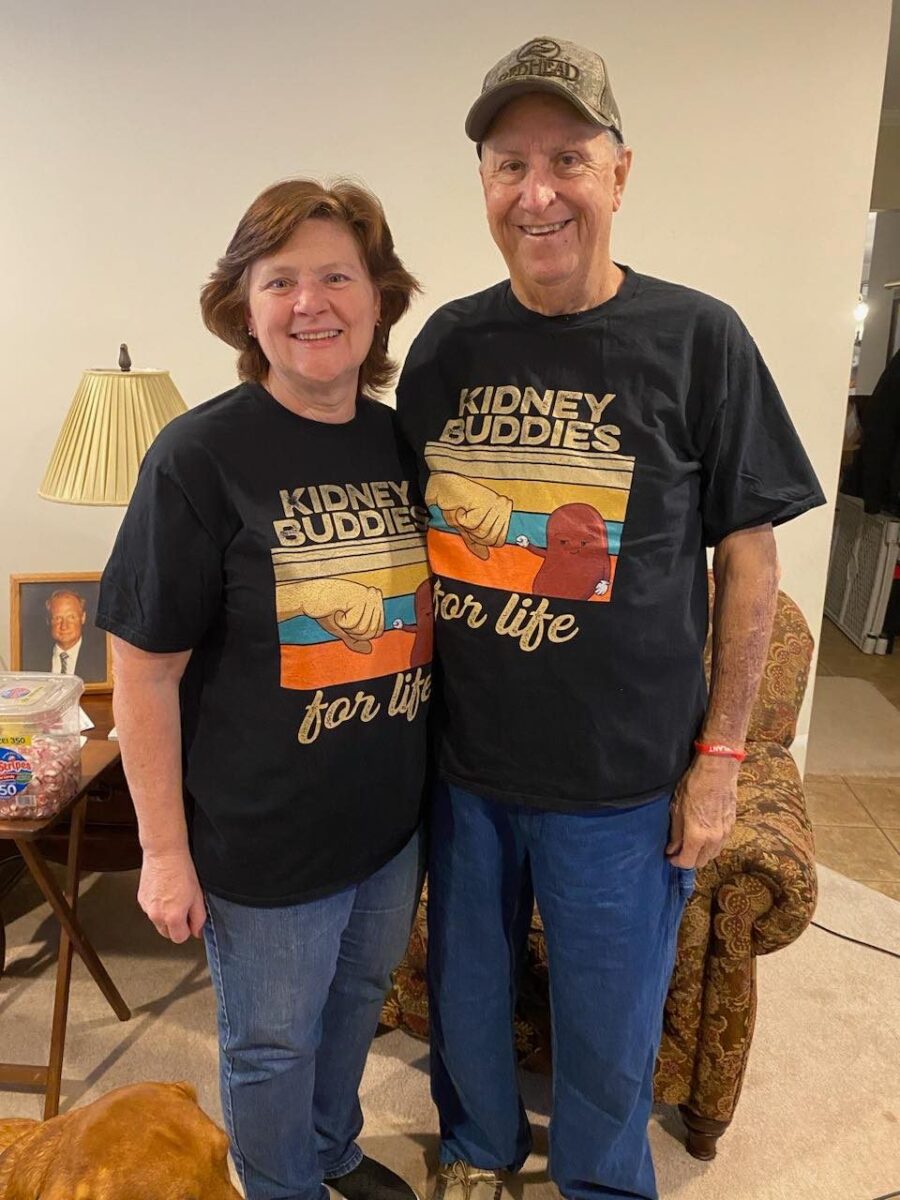In Sickness and in Health: Wife’s Kidney Donation Gives Husband a Second Chance
April is Donate Life Month, and we are shining a light on powerful stories from our health system and community. If you’re interested in learning more about the importance of organ donation or if you want to sign up to become a donor, visit msora.org.
Note: This story was originally published March 31, 2023. Donna retired February 2024 after 42 years of dedicated services at Memorial.

Donna has been a Memorial team member for more than 40 years. She’s a Nursing Manager for our Physician Clinics, and she recently made a life-changing decision to help her husband, Eddie, live a healthier life.
Eddie became diabetic in his mid-30s, but he never felt bad when his blood sugar got high. As Donna puts it, “You tend not to check your sugars the way you should, and it eventually just snowballs, and over time, it just causes irreparable damage to the kidneys.”
On April 1, 2021, Eddie started experiencing shortness of breath, so he and Donna went to one of Memorial’s walk-in clinics. He was sent to the emergency room because he was in fluid overload. During his stay in the hospital, his care team talked to him about his kidney function, which was getting dangerously low. According to the National Institutes of Health, a kidney is said to be in failure if it drops below 15 percent of normal. Eddie’s was close to 10 percent. Because of this, a catheter was placed for peritoneal dialysis before he was discharged from the hospital.
A dialysis dilemma
There are two kinds of dialysis. In peritoneal dialysis, the inside lining of your own belly acts as a natural filter. In hemodialysis, blood is pumped out of your body to an artificial kidney machine and returned to your body by tubes that connect you to the machine (source: kidney.org).
For the first year, Eddie was doing peritoneal dialysis overnight, but the catheter never worked efficiently. The 7-hour process was drawn out to 11 hours at times, causing the alarm on the machine to go off frequently, keeping both Eddie and Donna awake. After more challenges, his care team told him hemodialysis may be a better option. The sessions were shorter, but Eddie was having dialysis done five times a week at home for 3-4 hours at a time. This limited what the couple could do and greatly impacted their quality of life.
Organ donation options
At this point, Eddie became interested in other options that could help increase his quality of life. He began seeking out organ donation information. They experienced some difficulties while navigating insurance coverage, but they eventually made their way to the University of Mississippi Medical Center (UMMC) in Jackson. After meeting with a coordinator, Eddie learned his wait time for a transplant would likely be five years due to how common his blood type is. His blood type, O+, means that he could only receive a kidney from someone with blood type O. However, O blood type donors can donate to recipients with blood types A, B, AB, and O. This is what causes a longer average wait time for certain recipients.
Donna is O+ as well. After learning how long the wait could be, she decided to get checked to see if she was a match. Fortunately, she was, and the countdown to transplant could officially begin.
Donation timeline
Donna went through several tests to ensure her kidney would be the best option for Eddie. After a final split renal function test, the team elected to remove Donna’s left kidney laparoscopically. Even though Donna was a match, it took close to two years for the transplant to take place. The surgeries were pushed back multiple times due to health-related issues, but Eddie and Donna never lost hope. She says, “They prefer to do the left kidney if possible because the left kidney has a renal artery that is about four inches long, and the right kidney has a renal artery that’s only about 1 inch long. Plus, the right kidney is tucked up behind the liver, so it’s harder to access.”

Eddie had to have open surgery to receive his new kidney, but his two poorly functioning kidneys remain in his body. He wears a red bracelet that indicates he’s received a kidney donation.
“Freedom from the machine”
Eddie and Donna are now one-month post-op, and they are both healing and recovering successfully. They love to travel and explore new areas of the U.S., but dialysis put their adventures on hold. If they were to travel, they would have to plan ahead by shipping the supplies in advance and making sure they had enough for the time they were away.
Donna shares, “It actually improves both of our quality of life because he’s able to regain his freedom from the machine. It gives us the ability to travel again, which we had essentially lost.”
When asked what he would tell someone going through a similar circumstance, Eddie shares, “One thing I can say about anybody if they were in the position that I’m in, is to keep your spirits up. You have to push yourself and don’t let yourself get down. Keep looking forward to the next day and it’s going to happen.”
While they love to travel and experience new things together, the couple can now appreciate simpler opportunities like enjoying a meal at a restaurant or doing yard work together in the evenings.
Thank you for sharing your powerful story of organ donation with us, Eddie and Donna! Learn more about organ donation or sign up to become a donor by visiting msora.org.
